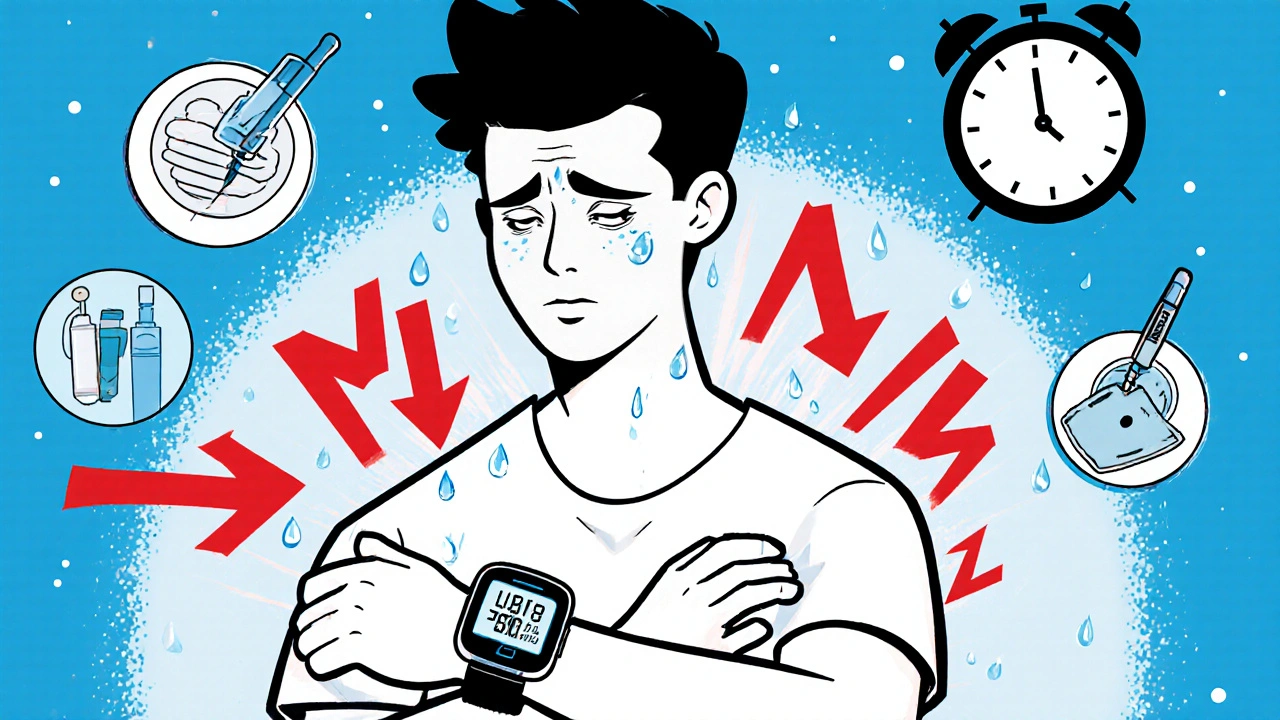Diabetes Management: Practical Steps to Control Blood Sugar
Managing diabetes doesn’t have to feel chaotic. Small, consistent habits change numbers and how you feel. Below are clear, useful actions you can start using today — no jargon, just practical moves that help keep blood sugar steady and lower complications over time.
Daily habits that move the needle
Track rather than guess. Check fasting and post-meal glucose for a week to see patterns. If you’re using a meter, write down times and what you ate. If you have a CGM, focus on trends: when do spikes happen? Small fixes — like adjusting carbs at breakfast or adding a 10–20 minute walk after meals — often cut spikes more than dramatic diet changes.
Portion control, not deprivation. Aim for consistent portions of carbs across meals. Use a plate method: half non-starchy veggies, a quarter lean protein, a quarter carbs. Swap sugary drinks for water or unsweetened tea. These moves reduce rapid blood sugar rises and make meds work better.
Move more without overhauling your life. Short walks, gardening, or taking stairs after meals improves insulin sensitivity. Strength training twice a week helps too — muscle uses glucose, which lowers levels naturally.
Sleep and stress matter. Poor sleep and chronic stress raise blood sugar. Try simple fixes: consistent sleep time, 15 minutes of deep breathing, or a short walk to clear your head. These lower stress hormones that push glucose up.
Medications, costs, and buying safely online
Know your meds. Metformin is often first-line; SGLT2 and GLP-1 drugs help with sugar and heart/kidney protection; insulin is best for many advanced cases. Ask your doctor why a drug was chosen and what targets you should hit. Don’t skip doses — consistency matters more than occasional larger doses.
Worried about cost? Use coupon programs, discount cards, and compare prices. Our site covers safe online pharmacy choices and how to spot risky sellers. Only buy from pharmacies that require a prescription, show a physical address, and have clear contact info. Avoid sites offering prescription drugs with no doctor visit.
Prevent low blood sugar. If you take insulin or sulfonylureas, carry quick carbs (juice, glucose tablets). Learn symptoms: sweating, shaking, confusion. Treat lows quickly and follow up with your clinician to adjust doses if they happen often.
Foot care, vaccinations, and regular checks save trouble. Inspect feet daily, keep feet clean and moisturized (not between toes), and see your provider yearly for foot and eye checks. Stay current on flu and pneumococcal vaccines; infections can spike glucose and cause complications.
Start small and measure progress. Pick one habit — checking after dinner, walking 15 minutes, or comparing pharmacy prices — and stick with it for two weeks. Adjust with your healthcare team. Diabetes management is a steady process; the right small changes add up fast.

Hypoglycemia: How to Recognize, Treat, and Prevent Low Blood Sugar
Learn how to recognize, treat, and prevent low blood sugar (hypoglycemia) in people with diabetes. Understand symptoms, emergency treatment with glucose and glucagon, and modern prevention tools like CGMs.
View More
Dapasmart: The Smart Way to Manage Type 2 Diabetes in 2025
Learn how Dapasmart is changing type 2 diabetes treatment in 2025. Get relevant facts and actionable tips for safer, more effective blood sugar control.
View More




